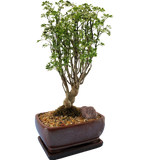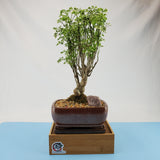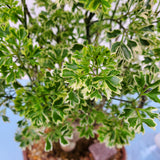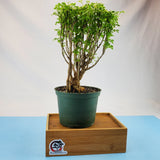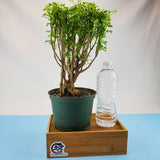Aralia Snowflake
Aralia Snowflake, also known as a Ming Aralia (Polyscias fruticosa), is a small shrub commonly used in Bonsai. This is one of the rare varieties of Bonsai that prefer indirect sun and are best grown indoors year-round. One of the most attractive features of the Aralia Snowflake is the ability to do very well indoors with relatively low amounts of light.
BONSAI CARE
The Aralia Snowflake grows exceptionally well indoors with minimum amounts of light. It will not tolerate temperatures below 10° celsius and will do best at temperatures between 15° to 25° celsius. The Aralia Snowflake likes moist soil, so constant watering and misting are required. The Aralia Snowflake does not tolerate wind, so it is very content growing indoors year-round.
Watering:
- The Aralia Snowflake needs moist soil, so do not let the soil dry out more than 50% year-round.
- It is good practice to check on the soil often until you are familiar with its watering needs.
- Training: Aralia Snowflake are usually trained by pruning branches down to one or two leaves and letting them branch out. Giving the Bonsai a full and ramified look. When wiring the Aralia Snowflake, make sure to use a thin gauge wire and wire only young flexible branches.
- Repotting: repot once every 2-3 years and older ones once every 3-5 years. Make sure to not repot on years where hard pruning has been done.
PRODUCT DETAILS
YOUNG: 6"-12" tall, comes in a 6" grower's pot.
MATURE: 8" - 16" tall, comes in an 8" handmade ceramic pot.







